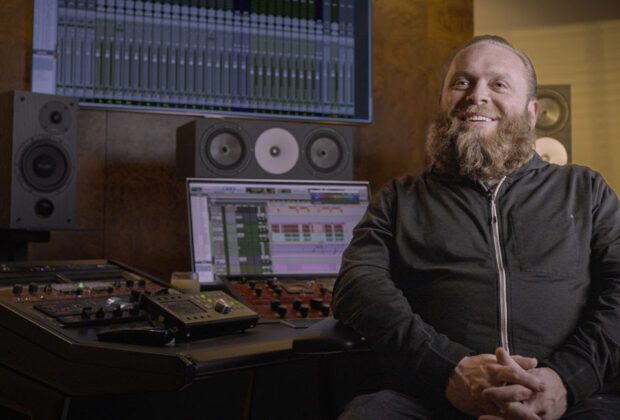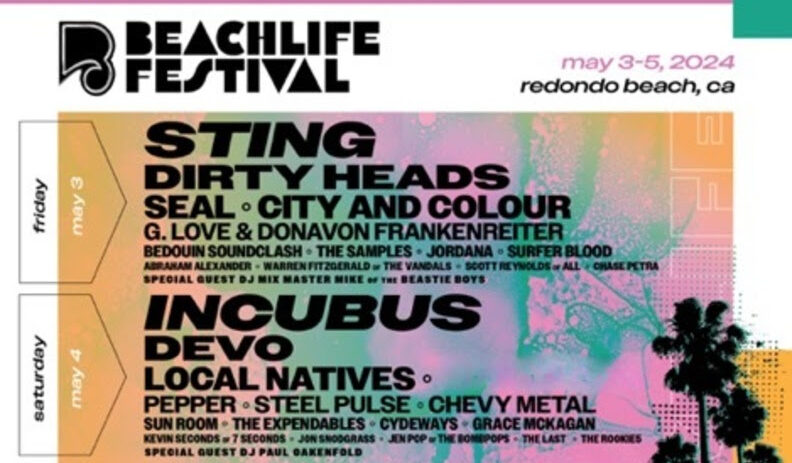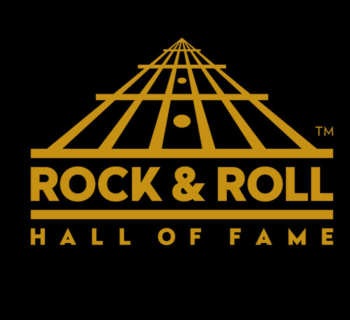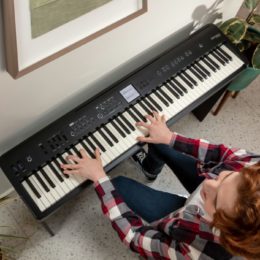Rob Kinelski’s journey with Amphion speakers began in 2020, not long after mixing Billie Eilish’s debut album, When We All Fall Asleep, Where Do We Go?, for which he won four GRAMMY® Awards. Fast-forward a few years, Kinelski has not only added more awards to his name but also many more speakers to his newly completed Dolby Atmos studio. Kinelski’s collaborated with studio designer Blake Douglas installing an Amphion 7.1.4 system for his studio in Los Angeles. “We said, ‘Let’s do it!’ We had Dolby come out and tune it, so it's properly set up,” he says. The immersive Amphion rig includes three Two18 speakers across the front, One18s for the surrounds, and One15s above powered by Amphion’s Amp400.12 multichannel amplifier. A BaseTwo25 bass system provides stereo low frequency extension while the FlexBase25 handles the LFE information.
Kinelski’s latest award was a 2024 GRAMMY for his work on Karol G’s Mañana Será Bonito, which won in the Best Música Urbana Album category. The album previously won a Latin GRAMMY for Album of the Year as well. He also mixed Billie Eilish’s contribution to the Barbie motion picture soundtrack, “What Was I Made For?” which won this year’s Grammy for Best Song — a songwriter’s award. The song, cowritten by Eilish and her brother Finneas O’Connell, not only won a Golden Globe earlier this year, but also the Oscar at the 96th Academy Awards on March 10th.
Kinelski recalls working at a studio in L.A. soon after Eilish’s first album was released when he was contacted by Amphion’s marketing manager Julian Hyvönen on social media. “I forget exactly what he said, but he messaged me on Instagram that he loved what I did on the album, and he would love to show me their speakers. They brought a pair of Two18s to my studio to demo and I said, ‘Well, the only way to know if I like them is to mix a song.’ They went into the lounge; we ordered some food and I did a mix. I sent it out and that first version was approved. So, I thought, ‘OK, this is cool!’”
After moving to a larger space Kinelski added the BaseTwo25 to his setup, having previously been working out of a bedroom at his home during the pandemic. “When I got into a bigger room, I wanted something to play for clients, so I needed a big loudspeaker system. The Two18 combined with the BaseTwo25 are loud enough to be my mains but they also sound good. It's not like most mains, which are just hyped up. I think they look cool as well!”
More than just looking cool, he continues, “They’re like mastering speakers, with a lot of detail. They're not forgiving; you hear everything. Lately I've been using them on low [volume], and that's been great. Because it's easy to feel it when it's cranked, but when you're at low volume, how does the bass sit with everything? Does it feel flubby? That has helped with getting the bass tight.”
Mastering Atmos Mixes
When Kinelski and his mix assistant, Eli Heisler, took on their first Dolby Atmos mix, they were initially unsure of the approach to take, so they invited people over to offer their opinions. “I tried a couple different versions of that first song and then we decided to just mix it the way we liked it. And that version was approved,” Kinelski says.
Whenever possible he likes to mix the Atmos version if he has already done the original stereo release. “We've been doing some work with Emeline, who’s on Capitol, and we've been doing all the Atmos mixes for her. Another project is the Sabrina Carpenter Christmas EP; I mixed five stereo songs on the EP and we did the Atmos mixes for all six songs. I feel like we've got a system and it's not going to take up too much time.”
Of the many Dolby Atmos projects he has mixed so far, Kinelski says, “I think the Sabrina Carpenter EP is my favorite. We really were tasteful. I'm finding lately that my favorite way to do it is to be conservative. Because when you go too aggressive, in my opinion, it just feels distracting. It's kind of jarring and you don't listen to the song. It’s still fun to put stuff in places but I'm trying to get people engaged in the music. I don’t want them to be engaged in the Atmos, I want them to be engaged with the song.”
Beyond the performance of Amphion speakers, Kinelski says, “I like those guys, because I feel like they're my friends. I can call them for anything. They're just so supportive and they love music. It feels good to be part of something like that.”














